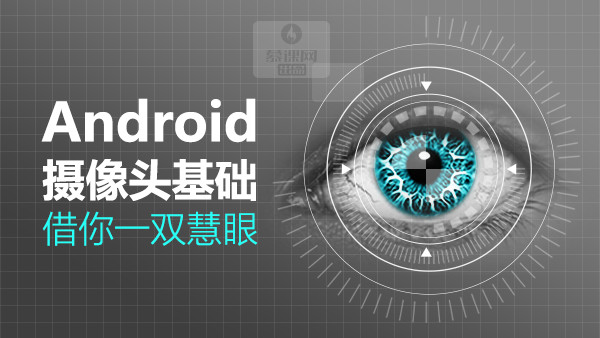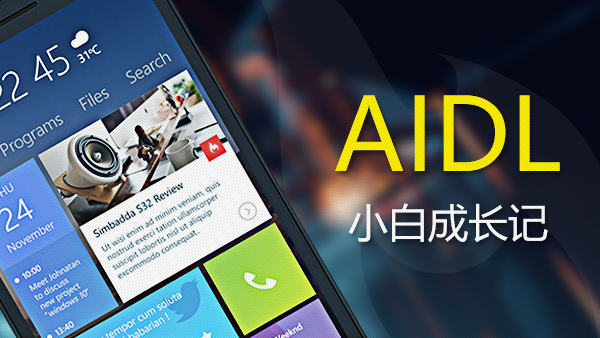相信做前端的都做过页面锚点定位的功能,通过<a href="#head"> 去设置页面内锚点定位跳转。
本篇文章就使用tablayout、scrollview来实现android锚点定位的功能。
效果图:

实现思路
1、监听scrollview滑动到的位置,tablayout切换到对应标签
2、tablayout各标签点击,scrollview可滑动到对应区域
自定义scrollview
因为我们需要监听到滑动过程中scrollview的滑动距离,自定义scrollview通过接口暴露滑动的距离。
public class CustomScrollView extends ScrollView { public Callbacks mCallbacks; public CustomScrollView(Context context) { super(context);
} public CustomScrollView(Context context, AttributeSet attrs) { super(context, attrs);
} public CustomScrollView(Context context, AttributeSet attrs, int defStyleAttr) { super(context, attrs, defStyleAttr);
} public void setCallbacks(Callbacks callbacks) { this.mCallbacks = callbacks;
} @Override
protected void onScrollChanged(int l, int t, int oldl, int oldt) { super.onScrollChanged(l, t, oldl, oldt); if (mCallbacks != null) {
mCallbacks.onScrollChanged(l, t, oldl, oldt);
}
} //定义接口用于回调
public interface Callbacks { void onScrollChanged(int x, int y, int oldx, int oldy);
}
}布局文件里 tablayout 和 CustomScrollView,内容暂时使用LinearLayout填充。
<?xml version="1.0" encoding="utf-8"?><LinearLayout xmlns:android="http://schemas.android.com/apk/res/android" xmlns:app="http://schemas.android.com/apk/res-auto" android:layout_width="match_parent" android:layout_height="match_parent" android:orientation="vertical"> <android.support.design.widget.TabLayout android:id="@+id/tablayout" android:layout_width="match_parent" android:layout_height="wrap_content" app:tabIndicatorColor="@color/colorPrimary" app:tabMode="scrollable" app:tabSelectedTextColor="@color/colorPrimary" /> <com.tabscroll.CustomScrollView android:id="@+id/scrollView" android:layout_width="match_parent" android:layout_height="match_parent" android:fillViewport="true" android:fitsSystemWindows="true"> <LinearLayout android:id="@+id/container" android:layout_width="match_parent" android:layout_height="wrap_content" android:orientation="vertical" android:padding="16dp"> </LinearLayout> </com.tabscroll.CustomScrollView></LinearLayout>
数据模拟
数据模拟,动态添加scrollview内的内容,这里自定义了AnchorView当作每一块的填充内容。
private String[] tabTxt = {"客厅", "卧室", "餐厅", "书房", "阳台", "儿童房"};//内容块view的集合private List<AnchorView> anchorList = new ArrayList<>();//判读是否是scrollview主动引起的滑动,true-是,false-否,由tablayout引起的private boolean isScroll;//记录上一次位置,防止在同一内容块里滑动 重复定位到tablayoutprivate int lastPos;//模拟数据,填充scrollviewfor (int i = 0; i < tabTxt.length; i++) {
AnchorView anchorView = new AnchorView(this);
anchorView.setAnchorTxt(tabTxt[i]);
anchorView.setContentTxt(tabTxt[i]);
anchorList.add(anchorView);
container.addView(anchorView);
}//tablayout设置标签for (int i = 0; i < tabTxt.length; i++) {
tabLayout.addTab(tabLayout.newTab().setText(tabTxt[i]));
}定义变量标志isScroll,用于判断scrollview的滑动由谁引起的,避免通过点击tabLayout引起的scrollview滑动问题。
定义变量标志lastPos,当scrollview 在同一模块中滑动时,则不再去调用tabLayout.setScrollPosition刷新标签。
自定义的AnchorView:
public class AnchorView extends LinearLayout { private TextView tvAnchor; private TextView tvContent; public AnchorView(Context context) { this(context, null);
} public AnchorView(Context context, @Nullable AttributeSet attrs) { this(context, attrs, 0);
} public AnchorView(Context context, @Nullable AttributeSet attrs, int defStyleAttr) { super(context, attrs, defStyleAttr);
init(context);
} private void init(Context context) {
View view = LayoutInflater.from(context).inflate(R.layout.view_anchor, this, true);
tvAnchor = view.findViewById(R.id.tv_anchor);
tvContent = view.findViewById(R.id.tv_content);
Random random = new Random(); int r = random.nextInt(256); int g = random.nextInt(256); int b = random.nextInt(256);
tvContent.setBackgroundColor(Color.rgb(r, g, b));
} public void setAnchorTxt(String txt) {
tvAnchor.setText(txt);
} public void setContentTxt(String txt) {
tvContent.setText(txt);
}
}实现
scrollview的滑动监听:
scrollView.setOnTouchListener(new View.OnTouchListener() { @Override
public boolean onTouch(View v, MotionEvent event) { //当由scrollview触发时,isScroll 置true
if (event.getAction() == MotionEvent.ACTION_DOWN) {
isScroll = true;
} return false;
}
});
scrollView.setCallbacks(new CustomScrollView.Callbacks() { @Override
public void onScrollChanged(int x, int y, int oldx, int oldy) { if (isScroll) { for (int i = tabTxt.length - 1; i >= 0; i--) { //根据滑动距离,对比各模块距离父布局顶部的高度判断
if (y > anchorList.get(i).getTop() - 10) {
setScrollPos(i); break;
}
}
}
}
});//tablayout对应标签的切换private void setScrollPos(int newPos) { if (lastPos != newPos) { //该方法不会触发tablayout 的onTabSelected 监听
tabLayout.setScrollPosition(newPos, 0, true);
}
lastPos = newPos;
}tabLayout的点击切换:
tabLayout.addOnTabSelectedListener(new TabLayout.OnTabSelectedListener() { @Override
public void onTabSelected(TabLayout.Tab tab) { //点击标签,使scrollview滑动,isScroll置false
isScroll = false; int pos = tab.getPosition(); int top = anchorList.get(pos).getTop();
scrollView.smoothScrollTo(0, top);
} @Override
public void onTabUnselected(TabLayout.Tab tab) {
} @Override
public void onTabReselected(TabLayout.Tab tab) {
}
});
至此效果出来了,但是
问题来了 可以看到当点击最后一项时,scrollView滑动到底部时并没有呈现出我们想要的效果,希望滑到最后一个时,全屏只有最后一块内容显示。
所以这里需要处理下最后一个view的高度,当不满全屏时,重新设置他的高度,通过计算让其撑满屏幕。
//监听判断最后一个模块的高度,不满一屏时让最后一个模块撑满屏幕private ViewTreeObserver.OnGlobalLayoutListener listener;
listener = new ViewTreeObserver.OnGlobalLayoutListener() { @Override
public void onGlobalLayout() { int screenH = getScreenHeight(); int statusBarH = getStatusBarHeight(MainActivity.this); int tabH = tabLayout.getHeight(); //计算内容块所在的高度,全屏高度-状态栏高度-tablayout的高度-内容container的padding 16dp
int lastH = screenH - statusBarH - tabH - 16 * 3;
AnchorView lastView = anchorList.get(anchorList.size() - 1); //当最后一个view 高度小于内容块高度时,设置其高度撑满
if (lastView.getHeight() < lastH) {
LinearLayout.LayoutParams params = new LinearLayout.LayoutParams(LinearLayout.LayoutParams.MATCH_PARENT, LinearLayout.LayoutParams.WRAP_CONTENT);
params.height = lastH;
lastView.setLayoutParams(params);
}
container.getViewTreeObserver().removeOnGlobalLayoutListener(listener);
}
};
container.getViewTreeObserver().addOnGlobalLayoutListener(listener);这样就达到了预期的效果了。

写到这里,tablayout + scrollview的锚点定位成型了,在实际项目中,我们还可以使用tablayout + recyclerview 来完成同样的效果,后续的话会带来这样的文章。
这段时间自己在做一个小程序,包括数据爬取 + 后台 + 小程序的,可能要过段时间才能出来,主要是数据爬虫那边比较麻烦的...期待下!
详细代码见
github地址:https://github.com/taixiang/tabScroll

 随时随地看视频
随时随地看视频




